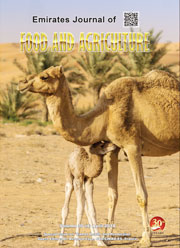USE OF A MARINE YEAST AS A BIOCONTROL AGENT OF THE NOVEL PATHOGEN PENICILLIUM CITRINUM ON PERSIAN LIME
DOI:
https://doi.org/10.9755/ejfa.2016-09-1273Keywords:
Debaryomyces hansenii, Penicillium citrinum, Postharvest, Biological control, Persian limeAbstract
Penicillium citrinum was isolated from fruits of a packinghouse in San Pedro Lagunillas, Nayarit, Mexico and turned out to be an endemic pathogen against Persian lime. This is the first report that involves this strain as a pathogen for citrus. The yeast Debaryomyces hansenii was evaluated for its effectiveness against P. citrinum in Persian lime. Dextrose and Tween 80 were added to the D. hansenii suspension in order to enhance its establishment in the fruit carposphere. The control of Persian lime decay caused by P. citrinum in postharvest and yeast population dynamics were evaluated. A 100% decay inhibition was obtained by the sole application of Debaryomyces hansenii even if population counts were minimal (3.3x105 CFU/fruit) at the end of the storage period (25th day) at 25°C and 60-75% of relative humidity. On the other hand, treatments with dextrose and Tween 80 promoted a better establishment of the yeast (3.2x108 UFC/fruit - 25 days storage), but infection by P. citrinum on Persian lime was higher (20 to 60% of infected fruits).










 .
. 